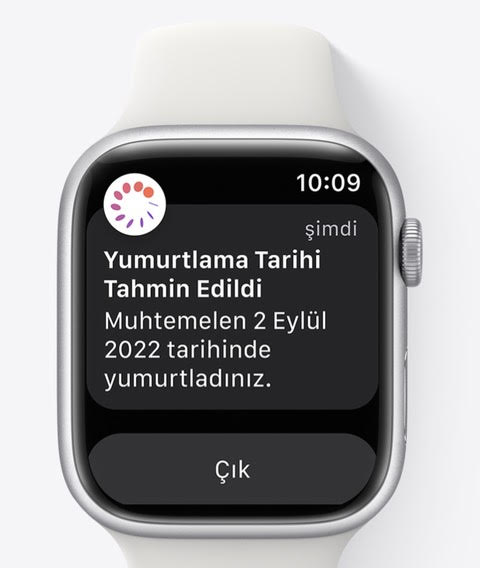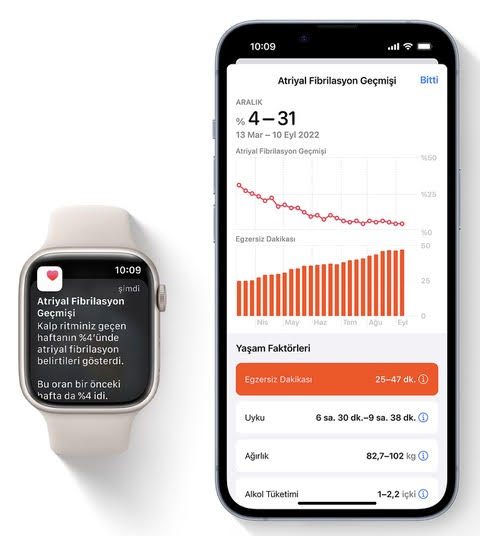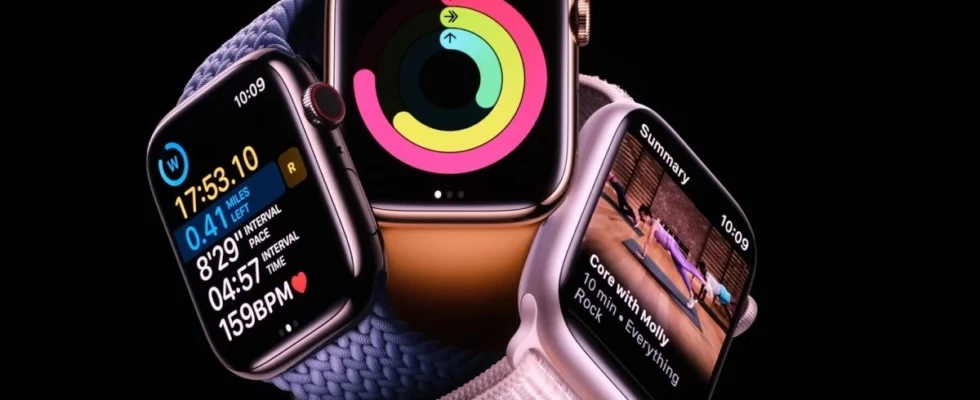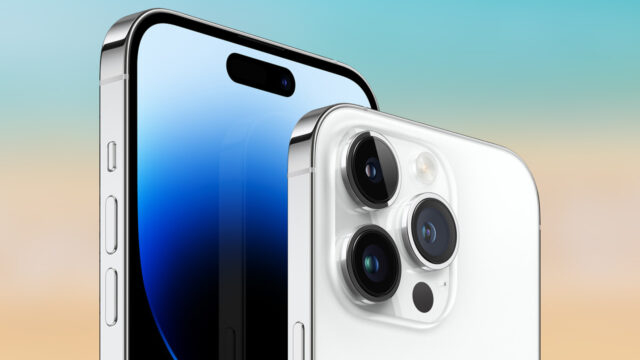Apple introduced the new generation smart watches Apple Watch Series 8 and Ultra models along with the iPhone 14 series at the event it held last September. These two products, which are highly appreciated for their hardware, continue to gain new features, even after months of release. Finally, the company launched its new feature, which is especially relevant to women.
Track temperature changes overnight at the wrist with Apple Watch
Apple Watch’s brand new “take a closer look at our health”Wrist Temperature Sensing for Women’s Health” and “AFib (Atrial Fibrillation) History” features are available to Apple Watch users in Turkey as of today. Wrist-based temperature detection is available on Apple Watch Series 8 and Apple Watch Ultra, and AFib History is available on all Apple Watch models that support watchOS 9.
For women, the menstrual cycle is an important indicator of health, and many doctors consider it a vital sign. Apple Watch Series 8 features temperature detection that gives women more insight into their health, designed with the same privacy features as any other health data. Apple Watch Series 8 has an innovative sensor that monitors your body temperature even while you sleep, so you can see changes over time.
Apple Watch also takes a unique approach to temperature sensing, with a dual-sensor design that reduces aberrations from the outside environment. One of the sensors is on the back of the watch, closest to the skin, and the other is just below the screen. Wrist temperature measured at night can be a good indicator of overall body temperature.

The sensors in Apple Watch Series 8 check wrist temperature every five seconds during sleep and can measure changes as small as 0.1°C. Users can see the changes in the reference temperature from night to night, depending on factors such as exercise, fatigue after air travel, or even illness, in the Health application.
Knowing when ovulation occurs can be helpful for family planning. By taking advantage of the new temperature sensing feature in Apple Watch Series 8, users can get retrospective ovulation predictions and improved menstrual cycle predictions that can help with family planning. Combined with your heart rate and recorded cycle data, you get a detailed view of your menstrual cycle. Temperature sensing also provides advanced cycle predictions.
With iOS 16 and watchOS 9, all Cycle Tracker users can now receive notifications when they indicate a possible deviation in their daily cycle history, such as irregular, infrequent, or prolonged periods, and persistent spotting, which may be signs of underlying health problems.
A first of its kind: AFib history
AFib History gives an estimate of the amount of time your heart has been showing signs of AFib. Studies show that the time spent in the condition of AFib affects the symptoms, the general quality of life and the risk of complications. Previously, there was no easy way to measure the frequency of AFib over a wide period of time or to control for lifestyle factors that may affect a person’s condition.

Users diagnosed with AFib can now access important information such as estimates of how often their heart rhythm shows signs of AFib when they enable the FDA-approved AFib History feature, so they can learn more about their condition. AFib History also allows users to track certain life factors that can affect time spent in AFib, such as sleep, exercise, and weight.
Users diagnosed with AFib can access important information such as estimates of how often their heart rhythm shows signs of AFib when they enable the FDA-approved AFib History feature. AFib History was validated in a clinical study with participants using both an Apple Watch and an FDA-approved reference device. This study showed that the average difference in weekly measurements between the Apple Watch and the reference device was less than 1%.
Users also receive weekly notifications to help them understand frequency and can view detailed data history in the Health app. These data also include lifestyle factors that can affect AFib, such as sleep, alcohol consumption, and exercise.
Users can also download a PDF document detailing AFib history and lifestyle factors and easily share it with doctors and paramedics for more informed conversations.

